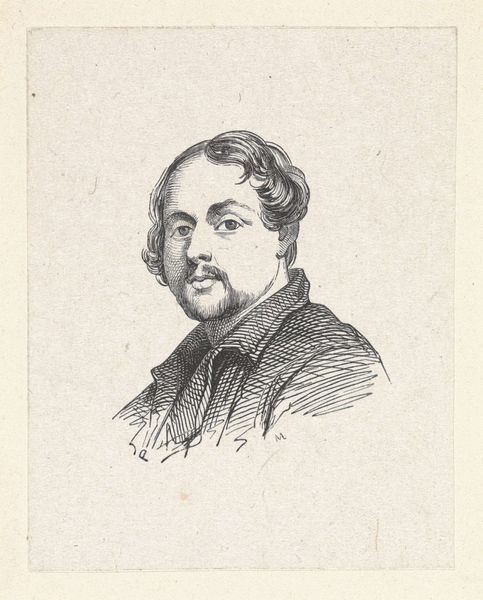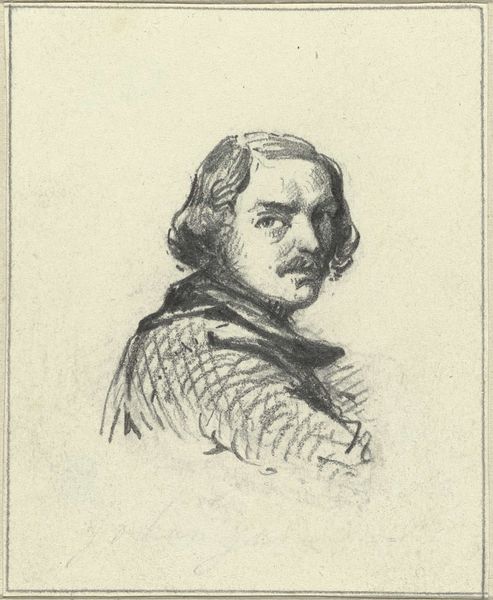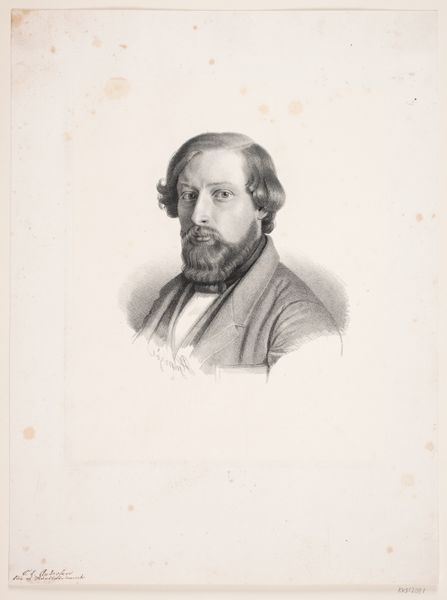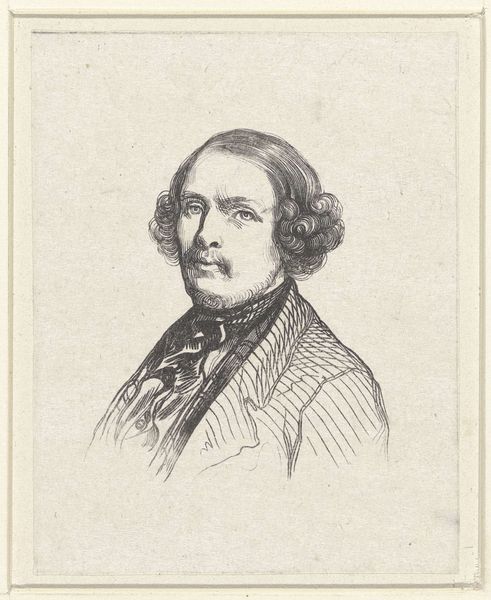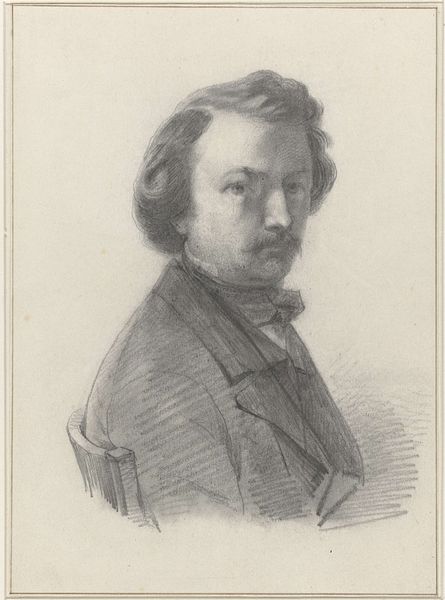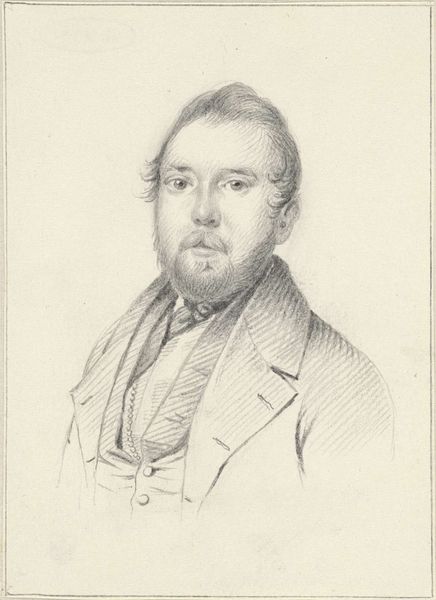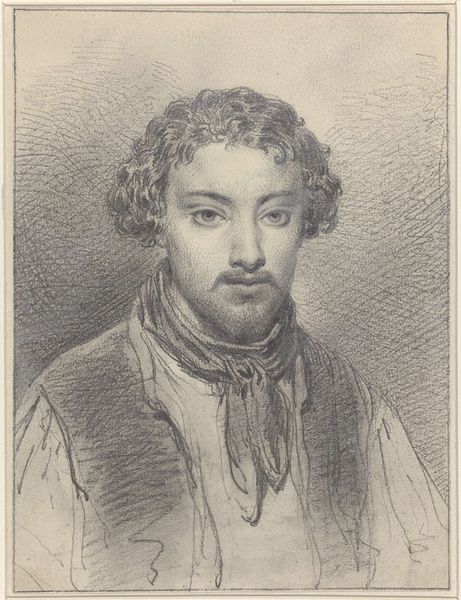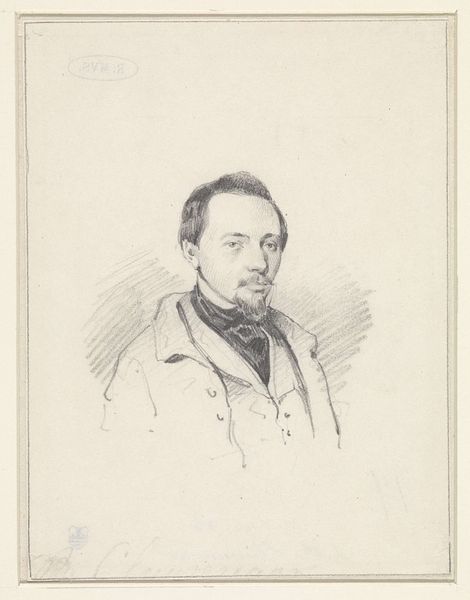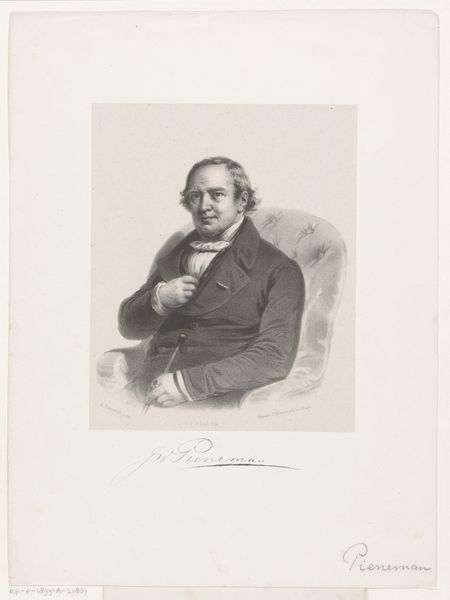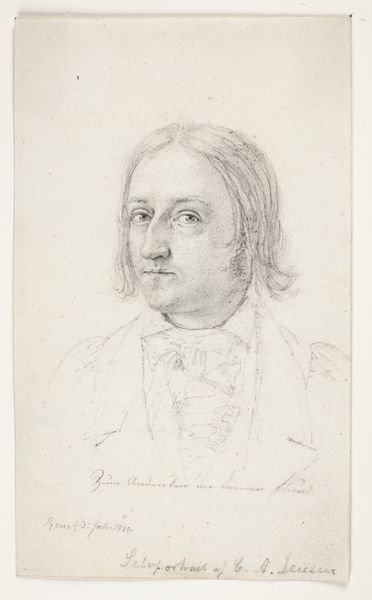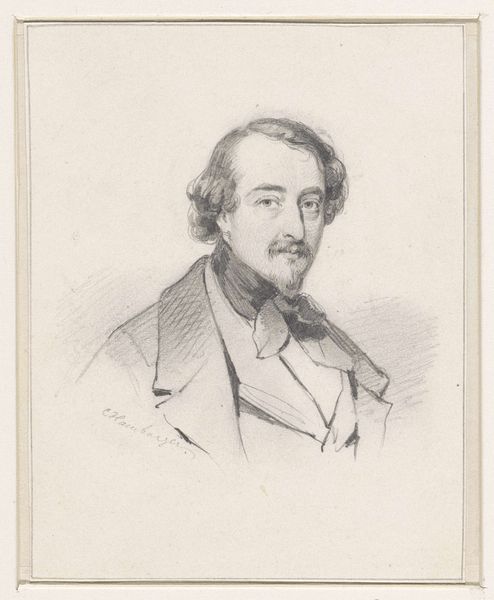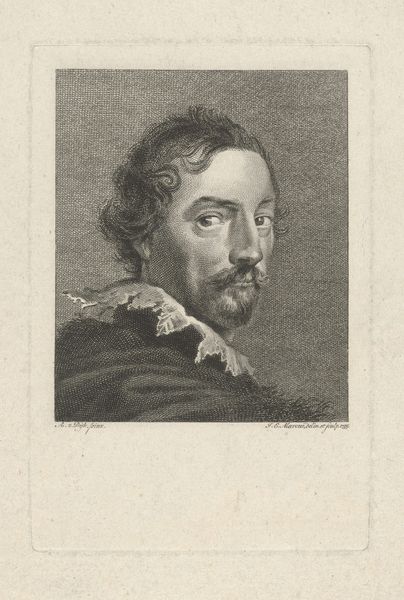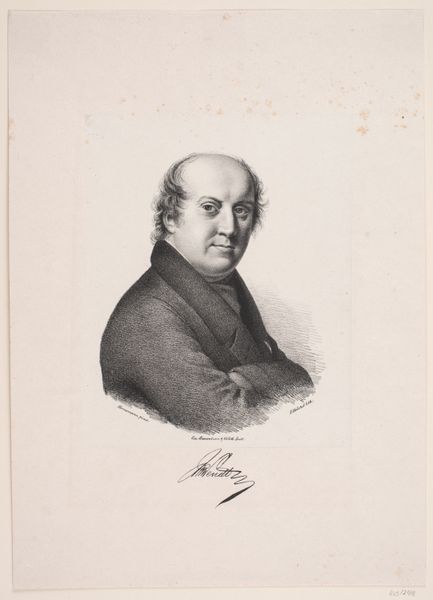
drawing, pencil
#
portrait
#
pencil drawn
#
drawing
#
pencil drawing
#
romanticism
#
pencil
#
portrait drawing
#
realism
Dimensions: height 112 mm, width 88 mm
Copyright: Rijks Museum: Open Domain
Curator: Before us is "Portret van Karel-Hendrik Geerts," a pencil drawing made between 1840 and 1842. Editor: It strikes me immediately as introspective. The subtle gradations in the pencil work give it a soft, almost dreamlike quality. The scale seems rather intimate, doesn't it? Curator: Indeed. Note how the artist uses hatching and cross-hatching to build form. The geometry of the face, softly modeled, guides the eye in a calculated dance, if you will. And then there is the tension in his gaze. Editor: I’m drawn to the materiality of the work, or lack thereof, paradoxically. It’s pencil on paper. We see the very means of its making, the traces of graphite laid down with labor and deliberation. How would that graphite have been sourced, manufactured, and sold? Was this drawing paper expensive? This context impacts our reading of it, shifting our gaze away from pure aesthetic enjoyment. Curator: The use of a seemingly simple medium enhances its conceptual power. There's a focus on pure form and mimetic skill; its elegance rests upon an undeniable artifice. It reveals to us its structure if we pay enough attention to line. Editor: And how does the choice of pencil as material connect to broader artistic trends? The Industrial Revolution meant that pencil production became easier, thus its impact was felt far beyond formal schools of art or portraits of elite sitters. Curator: Precisely. And that wider availability is precisely what allows for such meticulous, and dare I say, philosophical approaches to a more mundane artistic process and artistic creation. The work embodies that tension. Editor: Perhaps in appreciating a seemingly conventional portrait like this, we're reminded of the networks and flows of materials and labor that have often been erased from art historical narratives. Curator: Exactly, and its formalism reminds us of what makes up the backbone of an image’s visual architecture: contrast and perspective and light. These elements create its form but are also material tools, in essence. Editor: Yes, art and its consumption. Curator: So it's that combination, I believe, which makes it more special than the materials would immediately lead us to think. Editor: I agree. Examining this seemingly simple portrait through the lenses of materiality and form allows us to rethink our relationship to both process and subject.
Comments
No comments
Be the first to comment and join the conversation on the ultimate creative platform.
